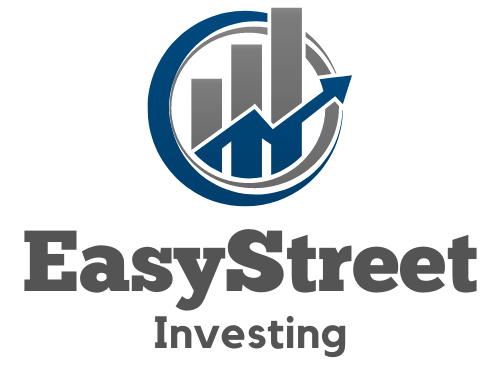Navigating the world of peer-to-peer lending can feel like a trek through dense financial foliage, but it’s a journey worth taking for those seeking alternative investment opportunities or loans. You’re about to unlock the secrets behind the numbers that can make or break your P2P experience: interest rates and fees. These are the signposts guiding you to smarter decisions, whether you’re on the lending side or borrowing.
As we delve into this topic, expect to discover how these rates and fees are calculated, what factors influence them, and strategies for minimizing costs while maximizing returns. With clear explanations and actionable insights, you’ll learn how to assess each P2P platform’s unique offerings. And remember, knowledge is power—especially when it comes to money matters. So let’s cut through the jargon and get down to business; your guide to deciphering the essentials of peer-to-peer financial exchanges starts right here.
Important Highlights
1. Understanding the cost of borrowing is crucial for participants in peer-to-peer lending—both borrowers and investors must grasp how interest rates can fluctuate based on factors such as credit risk, loan term, and market demand. These rates often determine the attractiveness of loans, influencing the funding speed and overall success of loan listings.
2. Fees in peer-to-peer lending vary widely among platforms; they can include origination fees, service charges, or late payment penalties. It’s essential for users to thoroughly examine fee structures as these costs can significantly affect the net return for investors and the true cost of borrowing for individuals seeking loans.
3. The borrower’s creditworthiness plays a pivotal role in dictating interest rates within peer-to-peer lending platforms. High credit scores generally lead to lower interest rates due to perceived lower risk, while those with poorer credit histories may face higher rates to compensate investors for taking on additional risk.
4. Investors should perform diligent research on default rates related to various loan grades to understand potential risks and adjust their investment strategies accordingly. Platforms usually provide data on historical returns which can be instrumental in forecasting future performance and managing expectations.
5. The regulatory environment surrounding peer-to-peer lending continues to evolve, affecting how platforms operate and what they may charge in terms of interest and fees. Staying informed about current regulations is imperative for both borrowers and lenders to ensure compliance and optimize their financial strategies within this innovative lending space. For more insights into regulatory impacts on financial services, consider visiting authoritative sources like the U.S. Securities and Exchange Commission.
Understanding Peer-to-Peer Lending Rates
Peer-to-peer (P2P) lending platforms facilitate loans between individuals without the need for traditional financial institutions. The interest rates on these loans are often determined by the level of risk associated with the borrower, which is assessed based on creditworthiness and other financial indicators. Higher risk leads to higher interest rates, incentivizing investors to fund loans that carry a greater chance of default.
The Role of Credit Scores in P2P Interest Rates
Borrowers with high credit scores usually secure more favorable interest rates because they pose less risk to lenders. In contrast, those with lower scores may face steeper rates as compensation for the higher perceived risk. P2P platforms typically categorize borrowers into tiers or grades, setting interest rates accordingly.
Fees Associated with P2P Lending
Apart from interest rates, borrowers must be aware of various fees that can affect the cost of a loan. Origination fees, charged for processing a new loan, can either be a flat rate or a percentage of the loan amount. Late payment fees, insufficient funds fees, and prepayment penalties are additional charges a borrower might encounter.
Detailed Breakdown of Common P2P Fees
- Origination Fee: Typically ranges from 1% to 6% of the loan amount.
- Late Payment Fee: Either a fixed amount or a percentage of the overdue payment.
- Insufficient Funds Fee: Incurred when a borrower’s payment fails due to lack of funds.
- Prepayment Penalty: Some platforms charge this fee for paying off a loan early.
Risk Assessment and Rate Determination
P2P platforms use sophisticated algorithms to assess borrower risk. These algorithms analyze data points such as employment history, income levels, and existing debts to assign an appropriate interest rate. Investors then review these ratings when deciding whether to fund a loan request.
Influence of Market Conditions on P2P Rates
Economic factors such as inflation and the overall health of the credit market also influence P2P lending rates. During times of economic downturn, lenders may increase rates to mitigate potential losses caused by higher default rates.
Investor Considerations for Funding Loans
Lenders must weigh the proposed interest rate against the likelihood of borrower default. Diversifying investments across multiple loans with varying risk levels can help manage potential losses while optimizing returns.
Analyzing Loan Performance Data
Potential investors should examine historical performance data provided by P2P platforms to gauge expected returns and delinquency rates across different loan grades. This analysis can inform strategy regarding which loans to invest in.
Selecting Loans with Balanced Risk-Reward Profiles
Finding loans that offer an attractive balance between risk and reward requires careful scrutiny of both borrower information and macroeconomic indicators. Investors seek out opportunities where the potential return justifies the inherent risk involved.
Navigating Tax Implications on Earnings from P2P Lending
Earnings from P2P lending are subject to taxation; thus, borrowers and lenders should understand their tax liabilities. Interest earned is taxable income and must be reported appropriately to avoid penalties from tax authorities like the IRS (Internal Revenue Service).
Making Informed Decisions in P2P Lending
To make informed decisions in P2P lending, participants must analyze all related costs thoroughly—not only interest rates but also associated fees—and consider how these impact overall investment returns or borrowing costs.
How Can Borrowers Minimize Costs While Maximizing Loan Approval Chances?
- Maintain a strong credit score for better interest rate offers.
- Compare different P2P platforms to find the most competitive terms.
- Avoid unnecessary fees by ensuring timely repayments and maintaining sufficient account balances.
- Carefully read all loan terms before agreeing to ensure clarity on all charges.
- If possible, pay off loans early to save on long-term interest—provided there’s no prepayment penalty.
Frequently Asked Questions
How do lenders set interest rates in P2P lending?
Lenders typically set interest rates based on the risk associated with the borrower. They consider credit scores, loan amounts, and repayment terms to determine the rate, aiming to balance competitive returns with reasonable costs for borrowers.
Can I negotiate the fees or rates on my P2P loan?
Generally, fees and rates are fixed based on your risk profile. However, you may find some room for negotiation by improving your credit score or choosing a different loan term.
What types of fees should I expect with P2P loans?
You might encounter origination fees, service charges, late payment penalties, and sometimes prepayment fees. Always check the fine print before agreeing to a loan.
Are interest rates higher for P2P loans than traditional bank loans?
Interest rates can vary widely. At times, P2P loans offer lower rates due to their operational efficiencies, but they can also be higher if you’re deemed a higher-risk borrower.
Will my credit score affect my P2P loan interest rate?
Absolutely! A better credit score often secures lower interest rates because it signals lower risk to lenders.
How are fees calculated for investors in P2P lending platforms?
Investors typically pay a percentage of their earnings as a service fee to the platform. This percentage varies depending on the platform’s policy.
Is there a way to reduce fees on my P2P loan?
Maintaining a strong credit history can lead to lower fees. Additionally, comparing different platforms to find those with the most favorable fee structures is wise.
What happens if I miss a payment on my P2P loan?
Missing a payment could result in late fees and potentially harm your credit score. It’s crucial to contact your lender immediately if you anticipate payment difficulties.
Do all peer-to-peer lending platforms charge similar interest rates and fees?
No, there’s quite a bit of variation across platforms. It’s essential to shop around and compare what each offers concerning rates and fees.
Can early repayment affect my cost of borrowing in P2P lending?
Sometimes it can. Some platforms might charge prepayment penalties while others encourage early repayment by waiving additional charges.
Closing Insights on Understanding Costs in Peer-to-Peer Lending
Navigating through the landscape of peer-to-peer lending requires an understanding of how interest rates and fees work. Gaining this knowledge empowers borrowers and investors alike to make informed financial decisions that align with their goals. Remember that every platform is unique; thorough research and comparison are key components of finding the best deal in the burgeoning world of P2P finance.
In conclusion, whether you’re looking at borrowing or investing through peer-to-peer lending platforms, paying close attention to interest rates and associated fees will help ensure that your experience is both profitable and positive. Keep learning and stay engaged with financial communities to stay abreast of evolving trends in this dynamic field.

